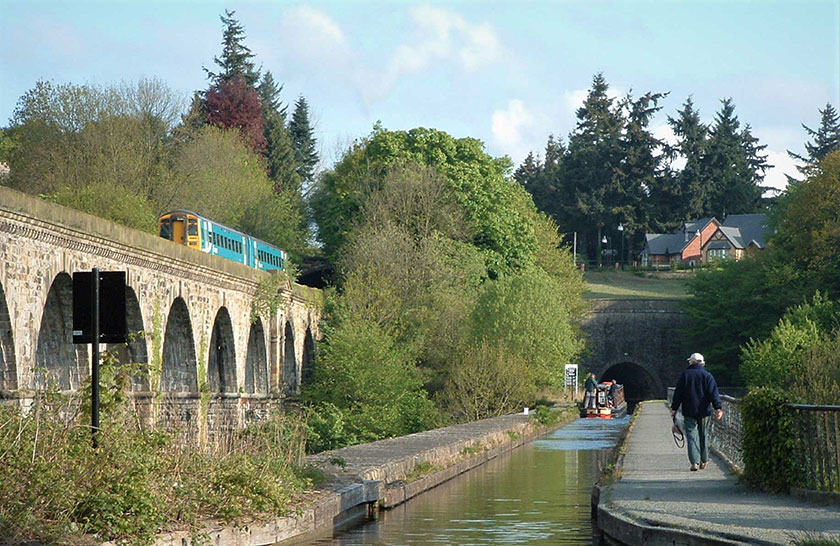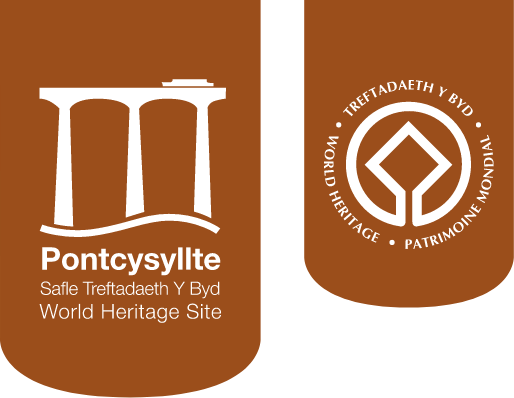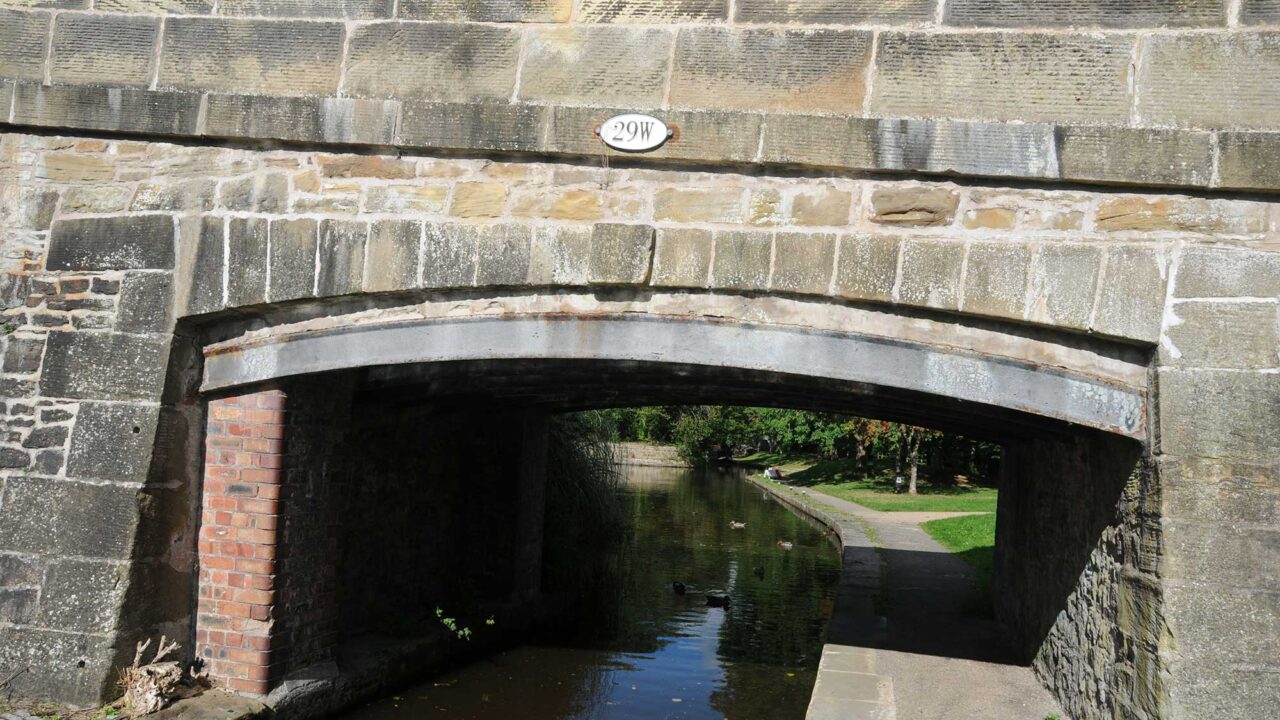Description
Because the Llangollen Canal is over 200 years old, it is easy to forget that it cut through a landscape of roads and fields that already existed. Bridges had to be built over the canal for the roads and to give farmers and householders access to their properties. Bridges are so important that a legal duty to build them was included in the parliamentary bills that allowed the canal to go ahead.
Telford and Jessop used a standard bridge design that could be adapted for everywhere that the canal had to be crossed. Lift bridges and foot bridges were also used where different types of traffic crossed the canal.
Of the thirty-one bridges crossing the canal today, twenty-three are original, built between 1794 and 1805. New bridges were built later, to allow for the new railways and roads that crossed the canals, while some older bridges fell out of use and were dismantled.
Aqueducts are bridges of course, carrying canals instead of roads. Viaducts are long bridges, carrying roads or railways. Tunnels are their opposites, carrying transport systems deep below the ground rather than above it. You can find all of these, in many forms, throughout the World Heritage Site.
Route from Llangollen to Sun Trevor
This film follows a narrowboat from Llangollen to Sun Trevor. It passes under many bridges, including the lift bridge at Llanddyn and several of Telford’s original canal crossings. It also shows how difficult navigating this narrow stretch of canal can be, especially at the ‘blind’ corner under Wenffrwd bridge.
More Information About Bridges
A standard bridge design is repeated along the canal. The simple hump-backed bridge has an arch just wide enough for one boat and the towpath. A good example of the original design is Plas-yn-y-Pentre Bridge, number 34W.
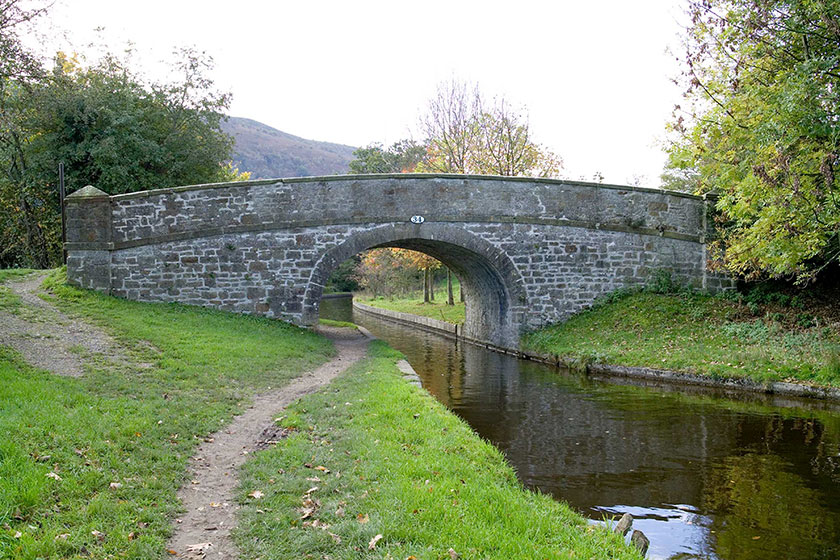
To build an arch, stones are set over a curved wooden scaffold called, centring. When the centring is removed, the weight of each stone pushes down on the ones below it, holding everything in place. Richard Colt Hoare’s drawing of Chirk Aqueduct under construction shows this method used by Jessop and Telford.
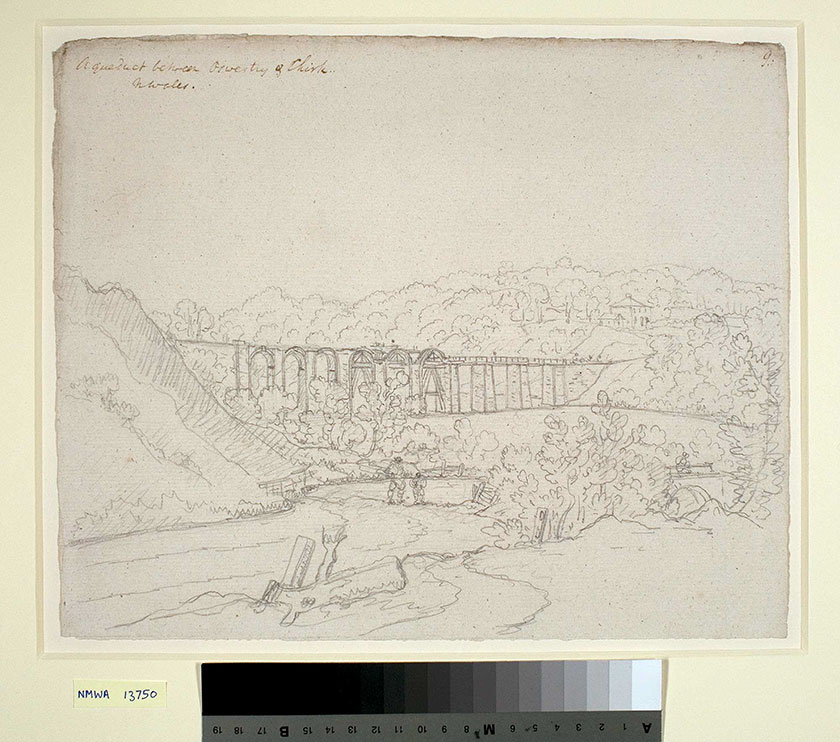
Jessop and Telford experimented with incorporating cast-iron beams in some bridges. The support meant that the arch could be flatter than one built only from stone or brick. The three along the canal are amongst the earliest surviving examples anywhere. This one is Rhos y Coed Bridge, at Trevor Basin, number 31W.
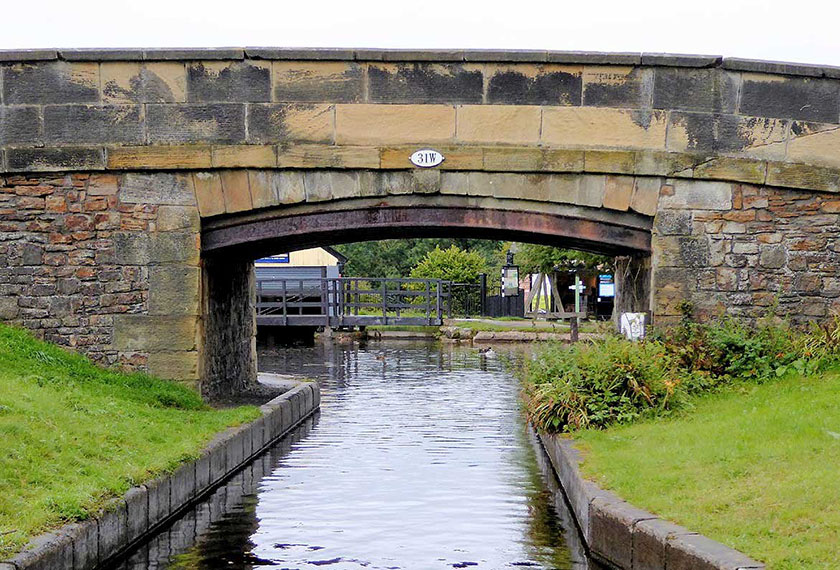
The standard bridge design could be adapted to suit the terrain. Sometimes the arch had to be made very wide as the canal went around a corner. Sometimes the top of the bridge was on a slope, where the road came down a hill. Bryn Ceirch Bridge, number 36W, shows this design.
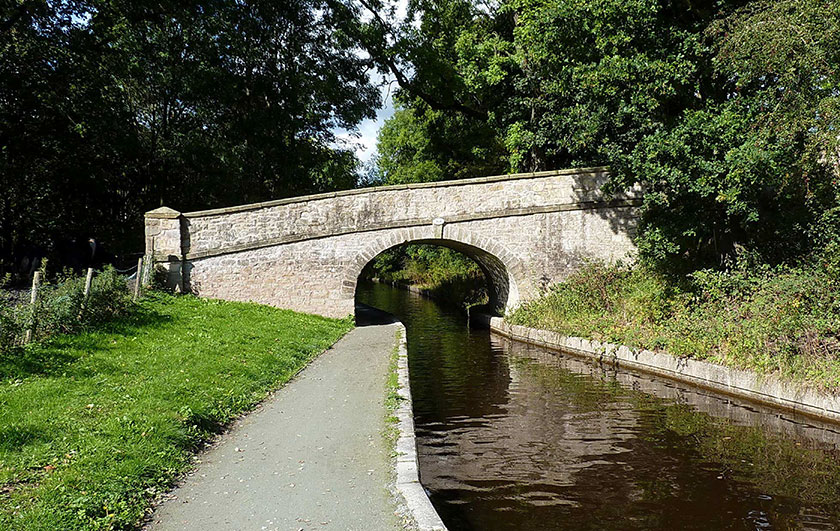
The road over Irish Bridge, number 27W, is much higher above the canal than with most other bridges. The canal is deep in a cutting at this point. The design was adapted so that the deck on the top stayed flat and the abutments supporting the bridge were very tall.
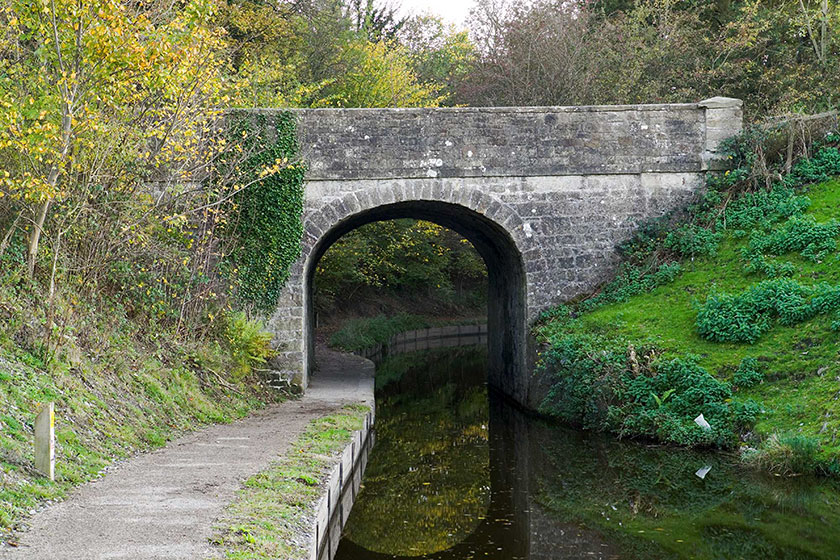
Postle’s Bridge, number 32W, near the Trevor Basin, is now a footbridge but it was built as a roving bridge. Horses that towed narrowboats walked under then across a roving bridge and down the other side to cross to another towpath, without having to detach the rope from their boat.
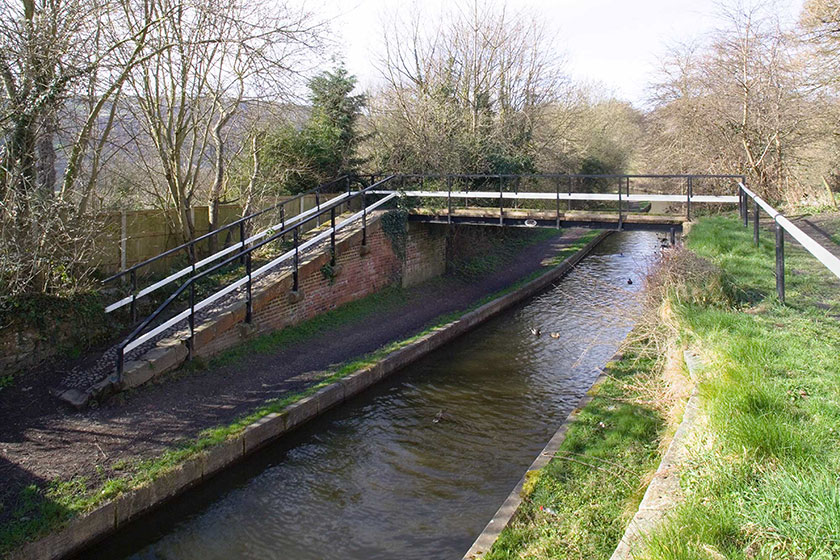
At Trevor Basin, entrances to a pair of dry docks are crossed by an original wooden swivel bridge. The bridge turns at the middle, letting boats in or out. Water can be drained from the docks so that the hulls of the boats can be inspected, repaired or cleaned.
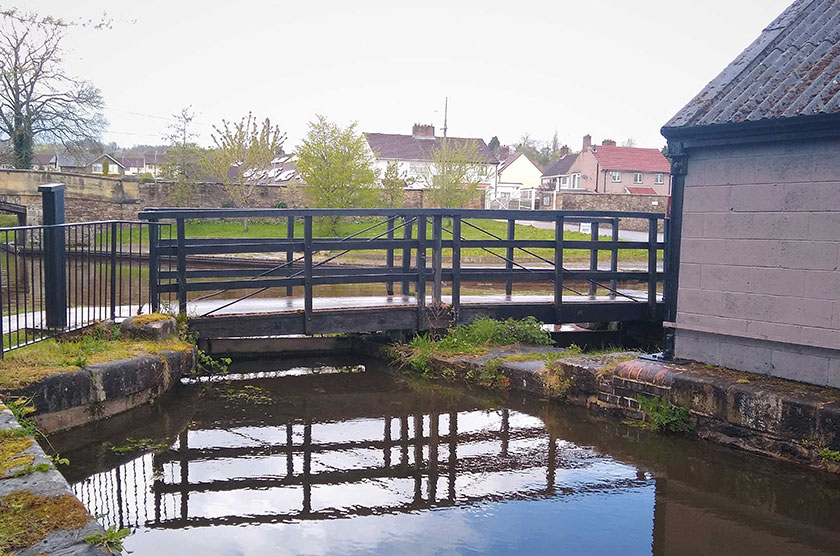
The development of a railway to Llangollen in the early 1860s required the building of the only railway bridge over the canal within the World Heritage Site. Bridge number 39W, at Bryn Howel has stone abutments but a later concrete deck. Today it is only used for access to fields.
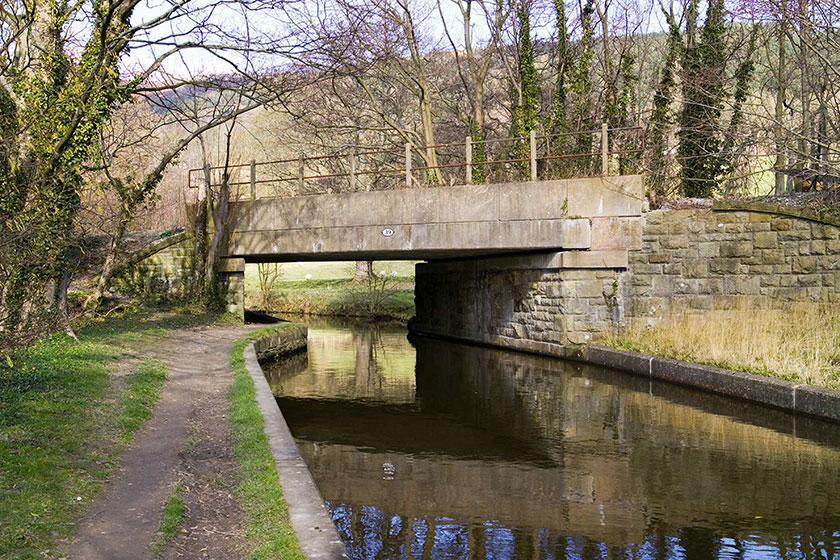
An unusual bridge at Sun Trevor, number 41W, has two arches. On the opposite bank from the towpath, lime from the quarries on the hill was loaded onto boats. The lime was brought to the wharf in horse drawn trams, that ran on rails through the smaller arch.
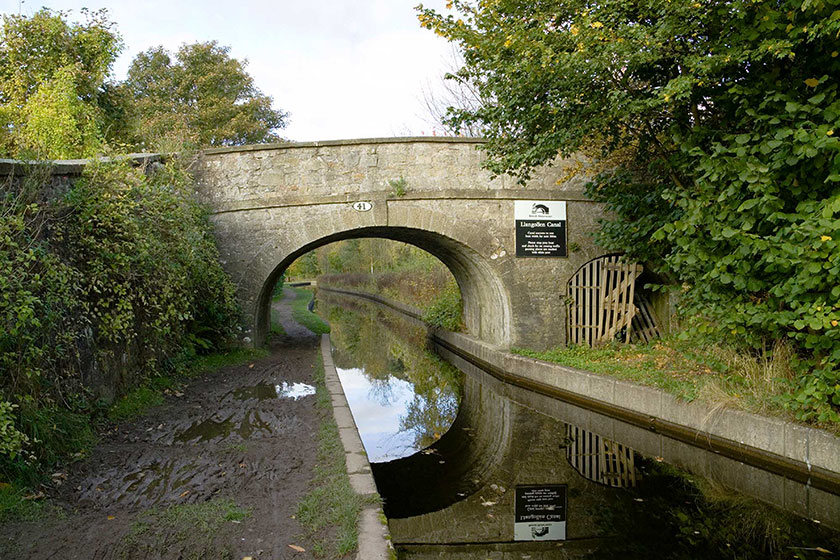
As cars and heavier road vehicles became more common in the twentieth century, the main road from Llangollen to Trevor was widened. A modern concrete bridge, number 42W, was built at Wenffrwd. Often unloved and overlooked, these bridges are as important and functional as the earlier stone bridges.
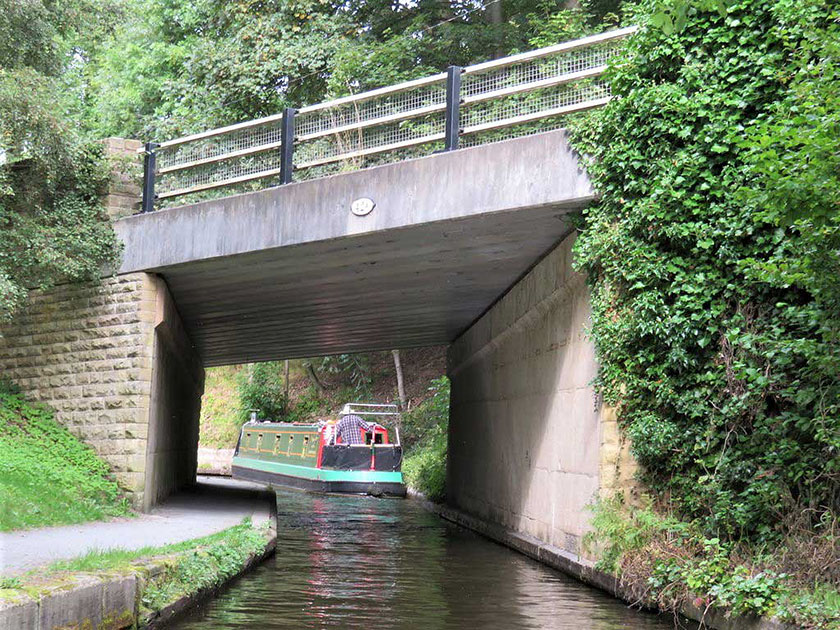
One of the most visited bridges in the area is more than 30 metres below the level of the canal. The Pont Cysylltau bridge, which gives the aqueduct its name, has crossed the River Dee since 1697. It is a favourite spot for taking photographs of its much higher neighbour.
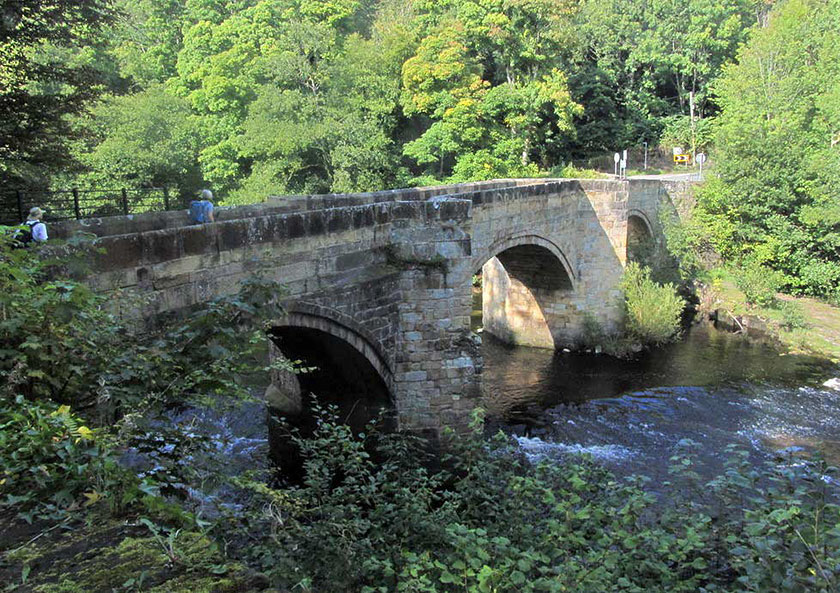
Gledrid Bridge, number 19W, is the only standard bridge in the World Heritage Site built mainly of brick, although they are more common on the English section of the canal. This is because the canal had not reached into areas with good building stone until beyond this point.
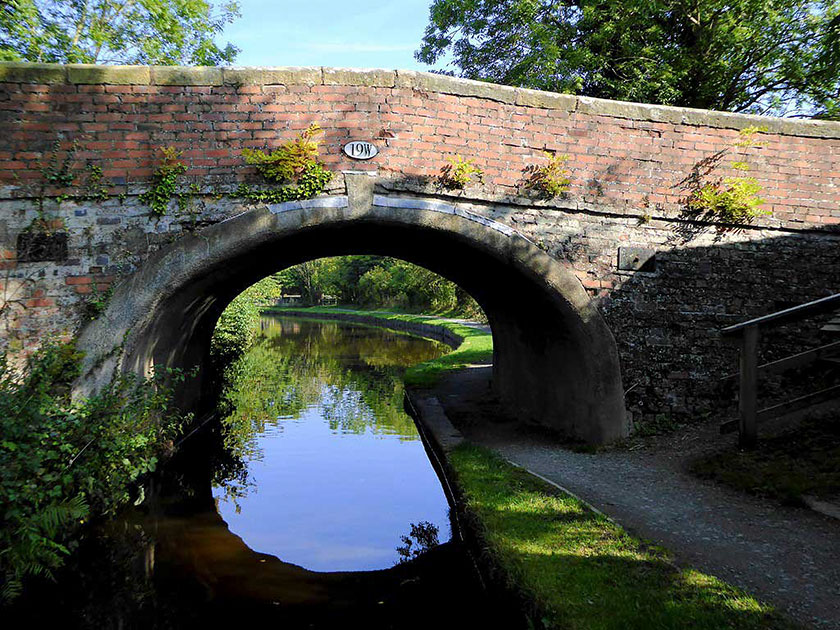
Parts of the tunnels at Chirk and Whitehouses were built in a similar way to bridges. A deep cutting for the canal was dug into the hillside. The arched brick tunnel was built over the top, before everything was covered with clay and soil. This was safer than digging through the hill.
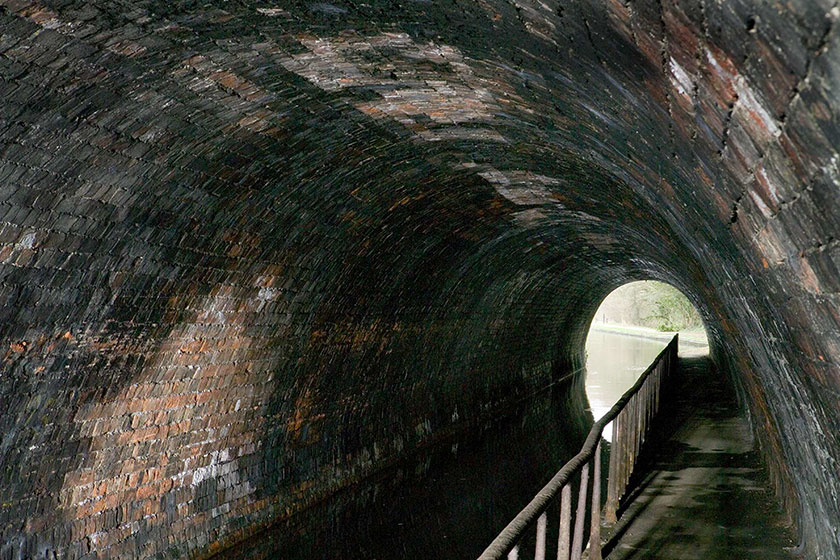
What looks like a short road tunnel at Cross Street, is in fact another aqueduct, as the canal is carried over the top. The tunnel originally gave access to the nearby farm but eventually it was used for a tramroad, linking Froncysyllte limekilns to the mainline railway near Irish Bridge.
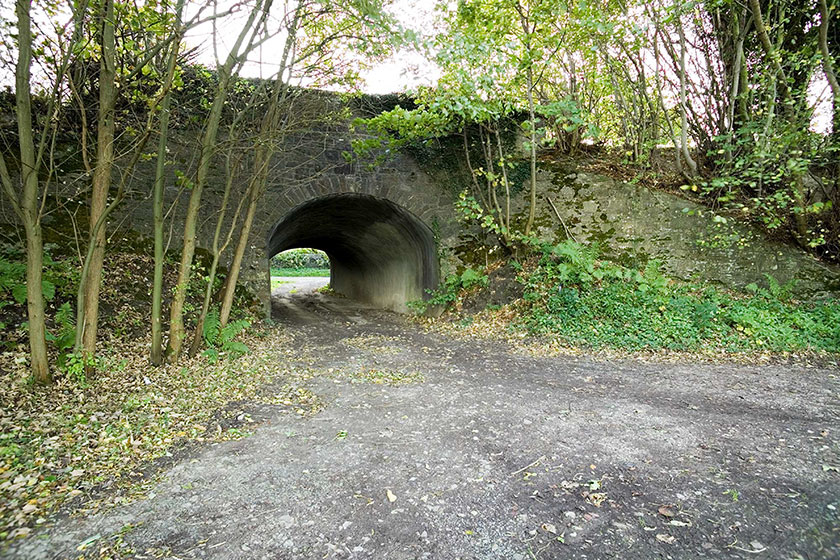
Lift bridges allow a route across the canal where there is not enough space or need for a full bridge. A counterbalance weight on a top edge allows the drawbridge to be easily raised and lowered to allow vehicles or boats to pass. Number 44W is for field access at Llanddyn.
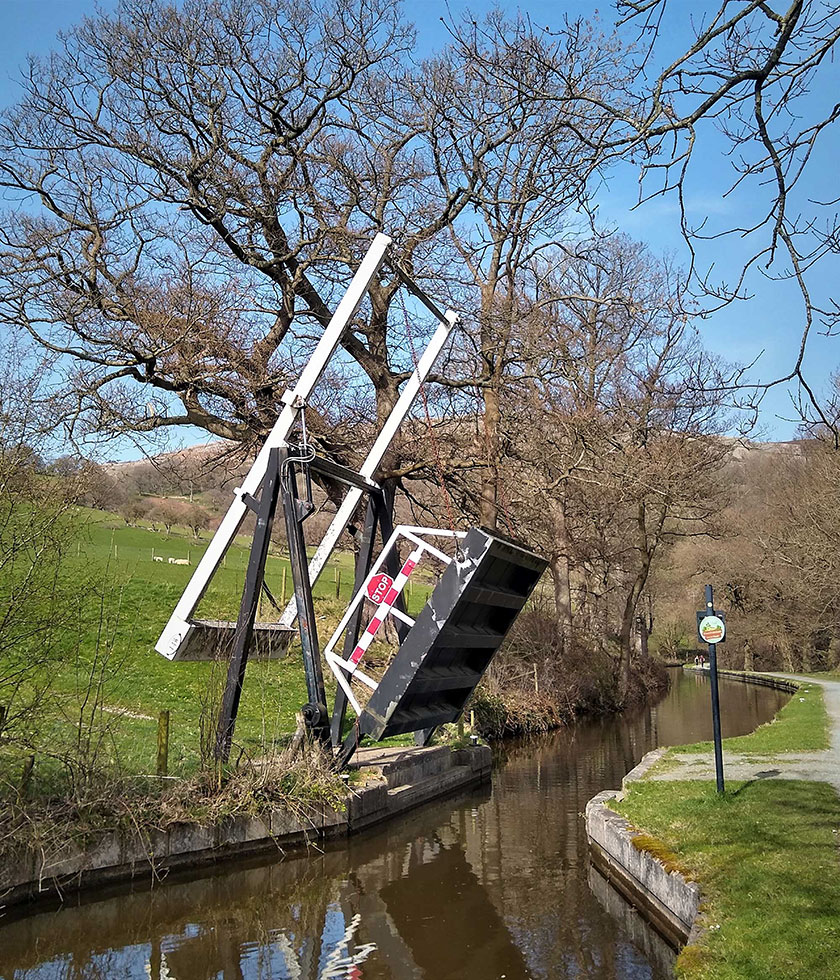
Some bridges over the canal have been demolished when they have fallen out of use. Quinta Bridge, between Gledrid and Chirk Bank, can only be imagined because the canal narrows where it stood. Near Chirk Marina, remains of the abutments for the Red Bridge can still be seen beside the canal.
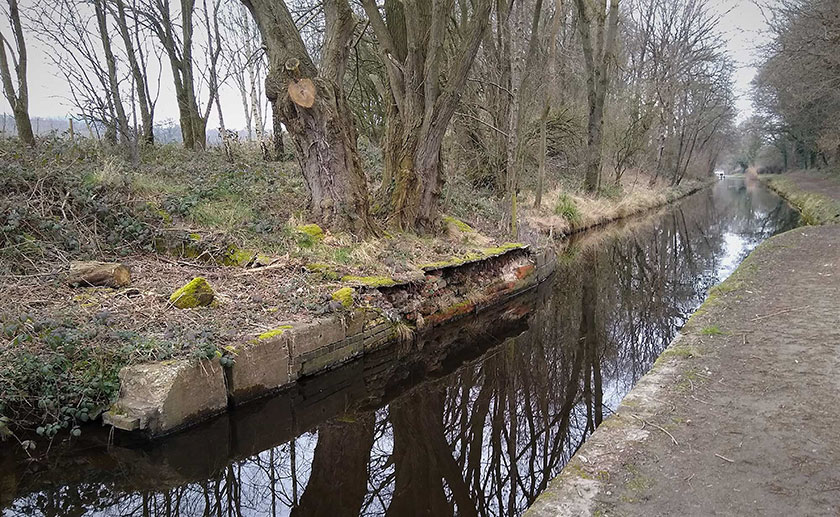
There were three original footbridges over the canal. Woodlands Bridge, near Chirk Bank, was built for workers at a nearby coal mine. Only a single pier remains. The piers and ramps of Postles Bridge, number 32W, and the White Bridge, number 33W still stand but their decks are modern replacements.
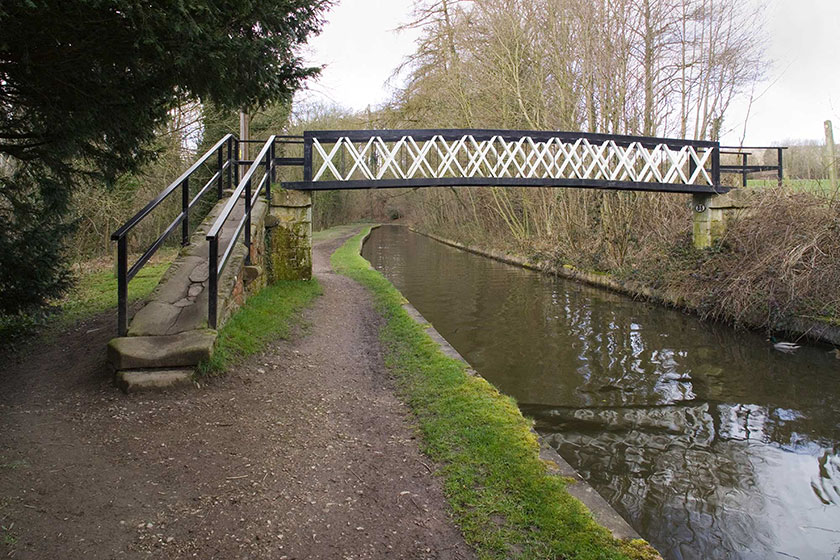
Viaducts are long bridges, carrying roads or railways across valleys. The magnificent railway viaducts at Chirk and Cefn were designed by engineer Henry Robertson. He admired the canal aqueducts of Telford and Jessop and wanted his structures to match their beauty. He also rebuilt the Chain Bridge, near the canal at Llantysilio.
